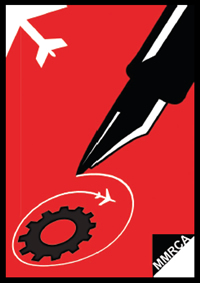INDIAN ARMED FORCES CHIEFS ON OUR RELENTLESS AND FOCUSED PUBLISHING EFFORTS

The insightful articles, inspiring narrations and analytical perspectives presented by the Editorial Team, establish an alluring connect with the reader. My compliments and best wishes to SP Guide Publications.

"Over the past 60 years, the growth of SP Guide Publications has mirrored the rising stature of Indian Navy. Its well-researched and informative magazines on Defence and Aerospace sector have served to shape an educated opinion of our military personnel, policy makers and the public alike. I wish SP's Publication team continued success, fair winds and following seas in all future endeavour!"

Since, its inception in 1964, SP Guide Publications has consistently demonstrated commitment to high-quality journalism in the aerospace and defence sectors, earning a well-deserved reputation as Asia's largest media house in this domain. I wish SP Guide Publications continued success in its pursuit of excellence.
Lifetime Commitment

There is no doubt that Life Cycle Cost is now the dominant factor that provides a true indicator of the best low cost and cost-effective procurement options
Two years ago, in a press interview, commenting on the MMRCA tender floated for the Indian Air Force (IAF) S.P. Tyagi the then Chief of the Air Staff, said, Earlier the IAF used to buy on the lowest tender system. Now we are saying not the lowest tender, but we want to see what the life-cycle cost is. How do you calculate life-cycle cost? This is a new area, so we have to devise a formula. So, to get a consensus and to make sure it is fair and everybody believes it is fair, it will take some time. This public statement signaled a profound shift in the underlying philosophy that has thus far shaped the procurement policy and procedure related to aircraft and weapon systems for the IAF. However, the Air Chief’s statement also indicated that as this was a new concept with which the IAF was not quite familiar, the modalities would have to be worked out carefully and correctly to ensure credibility of the procurement procedure. Incidentally, the concept of Life Cycle Cost was first developed in the mid-1960s but for reasons explained below, the Indian system of procurement of defence equipment has remained immune to it all these years.
In the days of the Cold War, the IAF procured military aircraft and weapon systems largely from the Soviet Union on highly attractive financial terms. There was neither a practice nor requirement for an open tender system when dealing with the Soviet Union. The position of the Indian Army and the Indian Navy in this regard would have been no different as all three services were tethered to the same source for hardware. Nearly 80 per cent of the inventory of the three services was of Soviet origin. Being the only source available for frontline military equipment and cutting edge technology, cost was never an issue and as such the question of Life Cycle Cost never arose. Hence it was never factored into the procurement process.
Although the unit cost of hardware of Soviet origin was much lower than contemporary western equipment, expenditure on maintenance, overhaul, servicing or replacement of components and upgrade over the Total Technical Life of the equipment was considerably higher than on the western equivalents. However, this did not matter as payments were based on a barter system on a favourable rupee-rouble exchange rate unlike in the case of western equipment where the outflow was in hard currency. But now with the globalisation of the Russian economy, the favourable terms of yesteryears are no longer available and all transactions are required to be in hard currency. Besides, as the nation now has easy access to non-Russian sources for the procurement of military aircraft and weapon systems, Life Cycle Cost has acquired as much relevance as unit cost, if not more.
In a follow up announcement, there were indications that the requirement to evaluate Life Cycle Cost in respect of the six competing aircraft in the tender for the 126 Medium Multi-Role Combat Aircraft would not apply. However, the RFP issued August 2007, clearly states the responsibility of the manufacturer in this regard as, Manufacturer would be responsible to provide parameters for computation and verifiable analysis of Life Cycle Cost for the life time usage of the aircraft. The methodology of computation of Life Cycle Cost of military equipment is indeed complex especially on account of the imponderables involved. While it may be possible to estimate Life Cycle Cost in respect of equipment in use for years with a fair degree of accuracy, in case of aircraft under development, the exercise may not provide as accurate a result. Besides, how does one compare the Life Cycle Cost of a single engine fighter with a twin engine fighter which has just entered operational service? What is needed is a consistent demand from the user or buyer that a good computation of Life Cycle Cost accompany each proposal. This will force the industry to make/evolve good accurate models for such calculations.





